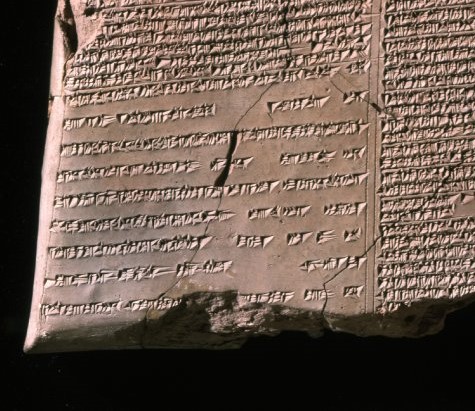What is the NME?
The Nineveh Medical Encyclopaedia
Research by Geller's BabMed project(funded by an ERC Advanced Grant) team between 2015–2018 showed that Ashurbanipal's material was not a disparate collection of unconnected treatises. The Encyclopaedia was a compendium of 12 treatises, divided into a total of 50 chapters. Each chapter focuses on an individual topic. They would have contained over two hundred lines, implying a total count of more than ten thousand lines of text. Each treatise has three main building blocks: prescriptions, medical incantations, and concise ritualistic healing procedures. Most prescriptions begin with a diagnostic description, and alternative drugs used for each therapy are listed together with precise instructions for preparing and administering the medication, with an optional prognosis for recovery. The Encyclopaedia is known mostly from sources produced during the 7th century BC for the royal library of Ashurbanipal, King of Assyria (669-c.630 BC).
In ancient Iraq, the first line of text on a given tablet served as the name of the composition. We can correlate with confidence the titles listed in the ancient catalogue with copies of those works themselves in the royal collection. We can also correlate this information with the helpful scribal notes recorded at the end of the tablets. These give the name of the current tablet and that of the subsequent tablet in the series. The surviving sequence provided by the scribes matches the sequence in which the texts are listed in the ancient catalogue.
King Ashurbanipal
Ashurbanipal was the most powerful ruler ever to have lived. As a child he had been tutored by one of the foremost scribes in the empire, and developed a keen personal interest in scholarship. Now a king, he assembled at his capital, Nineveh (Iraq), a collection that was both quantitatively and qualitatively superior to any other known cuneiform library. His library contained deluxe editions of all the most important scholarly works in circulation at that time, including medical handbooks. These were marked with his ownership label [http://oracc.org/asbp/RLAsb]:
Palace of Ashurbanipal, King of the World, King of Assyria, to whom Nabu and Tashmetu granted understanding, who acquired insight and a high level of scribal proficiency, that skill which none among the kings, my predecessors, acquired. I wrote, checked, and collated tablets with medical prescriptions from cranium to toenail, non-canonical material, elaborate teaching, and the advanced healing arts of Ninurta and Gula, as much as exists. I placed them within my palace for my consultation and reading.

The medical colophon on one of the NME tablets. Detail of K 71b [https://www.britishmuseum.org/collection/object/W_K-71-b]. Copyright Trustees of the British Museum. CC BY-NC-SA 4.0 [https://www.britishmuseum.org/terms-use/copyright-and-permissions]
A generation later, Ashurbanipal's library was burned as his palaces were sacked by invaders. Being made of clay, however, the tablets were not destroyed by the fire, but rather strengthened by it. Yet as the tablets fell to the floor, they smashed into many pieces. These fragments lay undisturbed until explorers and archaeologists found 32,000 of them in a series of excavations from the mid-19th to the early 20th century. They are now curated in the British Museum.
As the living fulcrum between heaven and earth, the Assyrian king had to be protected with the utmost care. Royal archives provide bountiful evidence of experts tending to the king's health. His personal library gathered the body of medical knowledge that had been accumulated in Mesopotamia over many centuries.
Sources
Assyrian medical texts were written in cuneiform script on clay tablets, in the Akkadian language. Each tablet contains one chapter. The clay remains in good condition, and the text remains as crisp and clear as the day it was written. But these tablets were smashed into fragments during the sack of Nineveh in 612 BC. The reconstruction of fragments back into their original tablets has been a slow process. It is to attempt multiple jigsaw puzzles simultaneously, with all the pieces mixed together, and without knowing what any of the pictures are, or even how many jigsaws are involved; all this having first had to separate the pieces from thousands of others.
Jonathan Taylor
Jonathan Taylor, 'What is the NME?', The Nineveh Medical Project, The Nineveh Medical Project, Department of the Middle East, The British Museum, Great Russell Street, London WC1B 3DG, 2022 [http://oracc.museum.upenn.edu/asbp/NinMed/whatisthenme/]